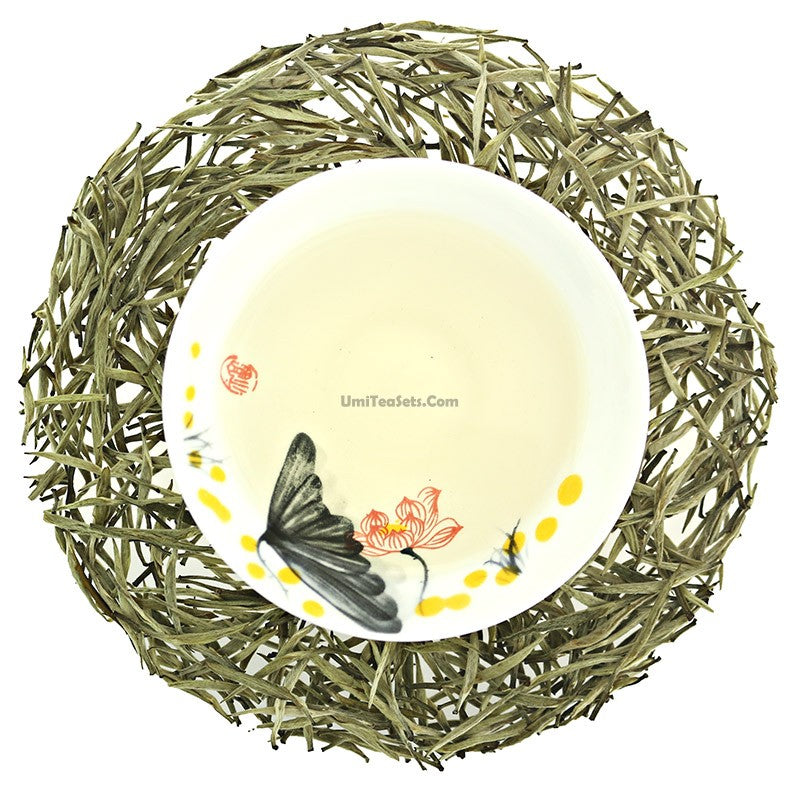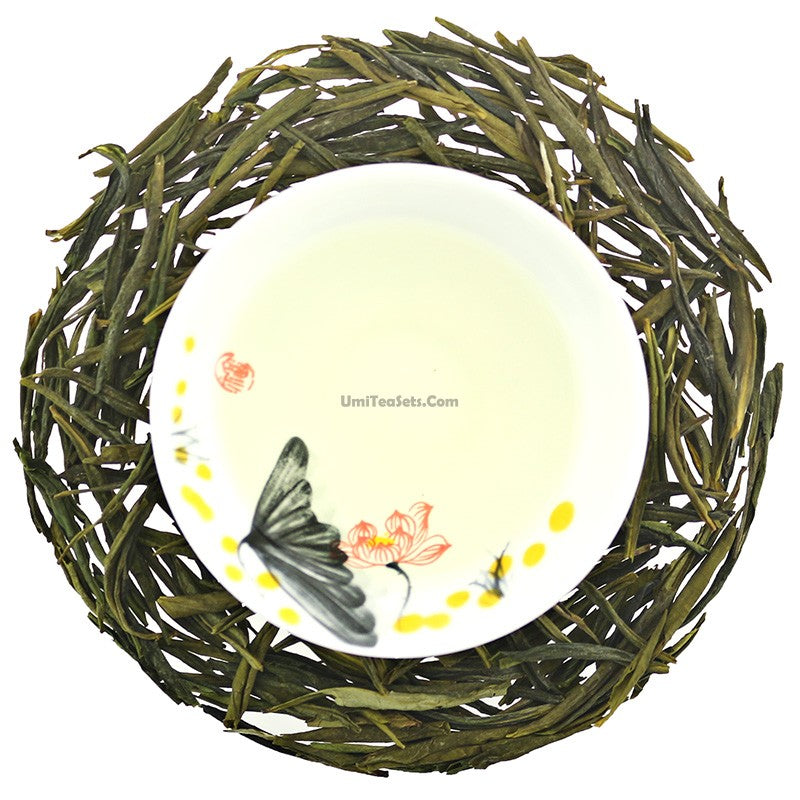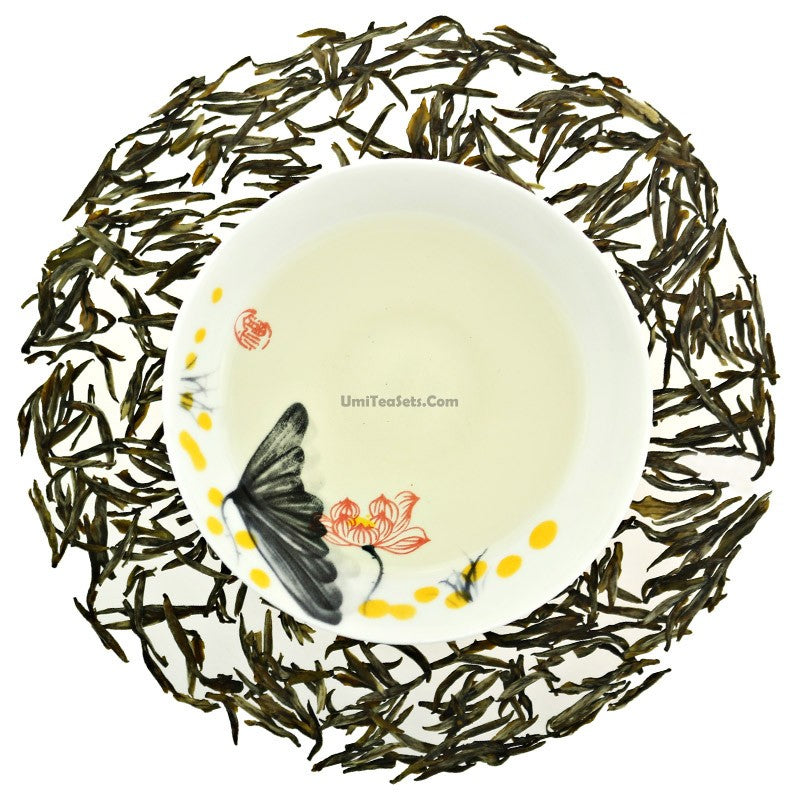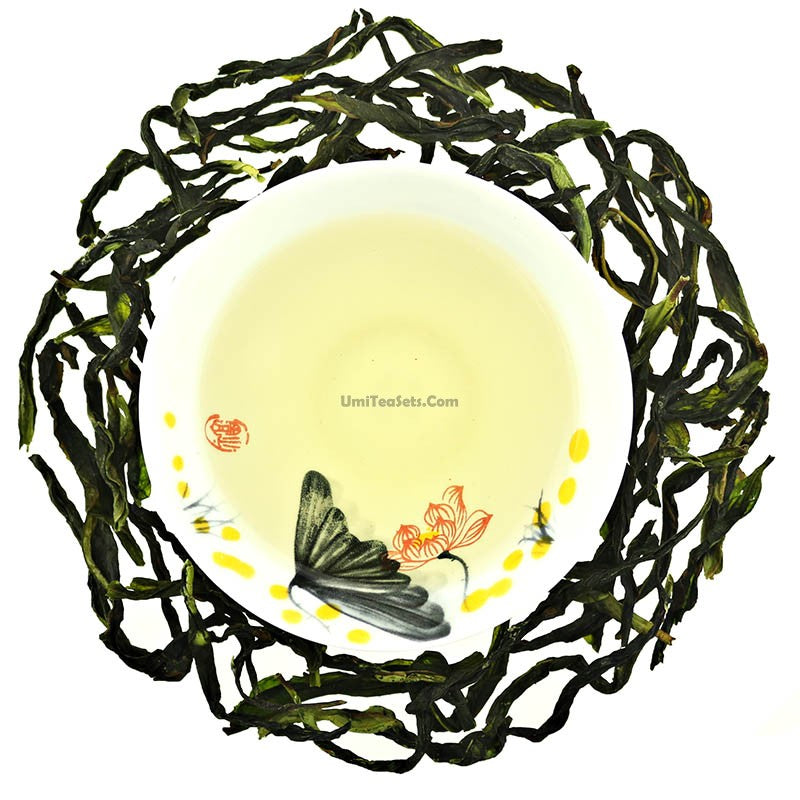4 products
-
Junshan Silver Needle Tea - COLORFULTEA
 Vendor:Junshan Silver Needle Tea - COLORFULTEACOLORFULTEA
Vendor:Junshan Silver Needle Tea - COLORFULTEACOLORFULTEA- Regular price
-
$4.90 USD $31.98 USD - Regular price
-
- Sale price
-
$4.90 USD $31.98 USD
Quick view
-
Huoshan Yellow Bud Tea - COLORFULTEA
 Vendor:Huoshan Yellow Bud Tea - COLORFULTEACOLORFULTEA
Vendor:Huoshan Yellow Bud Tea - COLORFULTEACOLORFULTEA- Regular price
-
$4.90 USD $31.98 USD - Regular price
-
- Sale price
-
$4.90 USD $31.98 USD
Quick view
-
Mengding Yellow Bud Tea - COLORFULTEA
 Vendor:Mengding Yellow Bud Tea - COLORFULTEACOLORFULTEA
Vendor:Mengding Yellow Bud Tea - COLORFULTEACOLORFULTEA- Regular price
-
$4.90 USD $39.98 USD - Regular price
-
- Sale price
-
$4.90 USD $39.98 USD
Quick view
-
Guangdong Dayeqing Tea - COLORFULTEA
 Vendor:Guangdong Dayeqing Tea - COLORFULTEACOLORFULTEA
Vendor:Guangdong Dayeqing Tea - COLORFULTEACOLORFULTEA- Regular price
-
$4.90 USD $31.98 USD - Regular price
-
- Sale price
-
$4.90 USD $31.98 USD
Quick view
Yellow Tea
Ggold-laid in jade attracts heart
The yellow tea is a slightly-fermented tea featuring yellow leaves, yellow tea soup, clear and pleasant aroma, and strong and brisk taste. It is mainly produced in Zhejiang, Sichuan, Anhui, Hunan, Guangdong, and Hubei.The yellow tea is produced in the similar process for producing green tea. The difference is the step of yellow simmering before or after rolling or before or after the first drying. Yellow simmering is the unique step in yellow tea processing. It is a key process to achieve yellow leaves and yellow soup of the yellow tea.
Based on the tenderness and size of the raw material fresh leaves, the yellow tea can be divided into three types: Huangya (Yellow Bud) Tea, Huangxiao (Yellow Small) Tea, and Huangda (Yellow Big) Tea. The Huangya Tea is made with single bud or the freshly opening one bud and one leaf as the raw material. Its features include straight separate buds, whose tips point upwards after brewing, and vertical suspension of tea leaves in tea soup. Main varieties of this tea include Junshan Yinzhen (Silver Tip), Mengding Huangya, and Mogan Huangya. Also known as Bud Tea, the Huangxiao Tea is made with fine, tender, and freshly opening one bud and one leaf or one bud and two leaves. Its features include fine, tight, and tippy strips. The tea soup is clear and apricot yellow. It tastes mellow and brisk. The brewed tea leaves are tenderly yellow and bright. Main varieties of this tea include Weishan Maojian (Hairy Tip), Beigang Maojian, Yuan'an Luyuan, and Wenzhou Huangtang (Yellow Soup). Also known as Leaf Tea, the Huangda Tea is made with one bud and two or three leaves to four or five leaves. Its features include fat leaves, thick stems, connected stem and leaf, and golden color. It has a slight smell of rice crust. The tea has a strong flavor and lasts long in brewing. It is mainly produced in Huoshan, Jinzhai, Liu'an, Yuexi, and Mt. Huangshan of Anhui Province. Its main varieties include Huoshan Huangdaya (Yellow Big Bud) and Guangdong Dayeqing (Bigleaved Green).
Place of origin
Mainly in Junshan and Weishan in Hunan Province, some in Jinzhai, Anhui Province, and Yuan'an, Hubei Province.
Tea processing
Fixation
Polish the pot surface before fixation, stir the tea lightly and flexibly, and lower the fire temperature from high. After 4 to 5 minutes, green gas disappears. Fixation completes when fresh aroma sends out.
Piling
Hot and humid conditions make the tea compositions undergo certain chemical changes, getting the quality of yellow leaf and liquid. Tea leaf moisture content and temperature are greatly attributed to piling effect. The greater the moisture content, the higher the leaf temperature, the faster the yellowing process in the hot and humid conditions.
Drying
Yellow tea is generally dried for several times, and the temperature is lower than other teas, usually 50 C to 60C.
Yellow tea boutique
Junshan Silver Needle, Mengding Yellow Tips, and Huoshan Yellow bud tea.
Recognizing
Appearance
High quality yellow tea has fat bud and is tippy, golden or yellowish green and tender yellow; the inferior has less fat bud and is tippy and dull green; the worst is thin, tippy and dull grey.
Aroma
The high quality is aroma, sweet and brisk; the inferior has sulks odor.
Effects of yellow tea
1. In the boring process, yellow tea produces large amounts of digestive enzymes which are effective to indigestion and inappetence.
2. Rich in tea polyphenols, amino acids, soluble sugars, vitamins and other nutrients, yellow tea has a significant effect on the prevention and treatment of esophagus cancer.
3. Fresh yellow tea leaf remains more than 85% natural substances that have special cancer prevention, anticancer, bactericidal and anti-inflammatory effects, which surpass other teas.
Types of Yellow Tea
Yellow large leaf tea: Taking one bud and two or three leaves or one bud and four or five leaves as raw materials. It mainly includes Huoshan Yellow large leaf tea and Guangdong Dayeqing
Yellow small leaf tea: Taking tender shoots as raw materials. It mainly includes Pak Tippy, Weishan Tippy and Pingyang Huangtang tea
Yellow bud tea: Taking a single tender bud or one bud and one leaf as materials. It mainly includes Junshan Silver Needle, Mengding Yellow Bud tea and Huoshan Yellow bud tea
How "yellow leaves and yellow liquid" comes?
The processing of yellow tea is quite similar to green tea,but there is a special "boring" process. After that, the leaves turn yellow. Then through drying, yellow tea comes out, forming the quality of "yellow leaves and yellow liquid".




